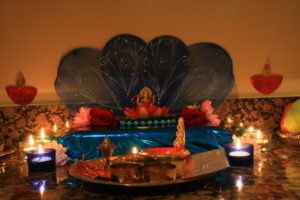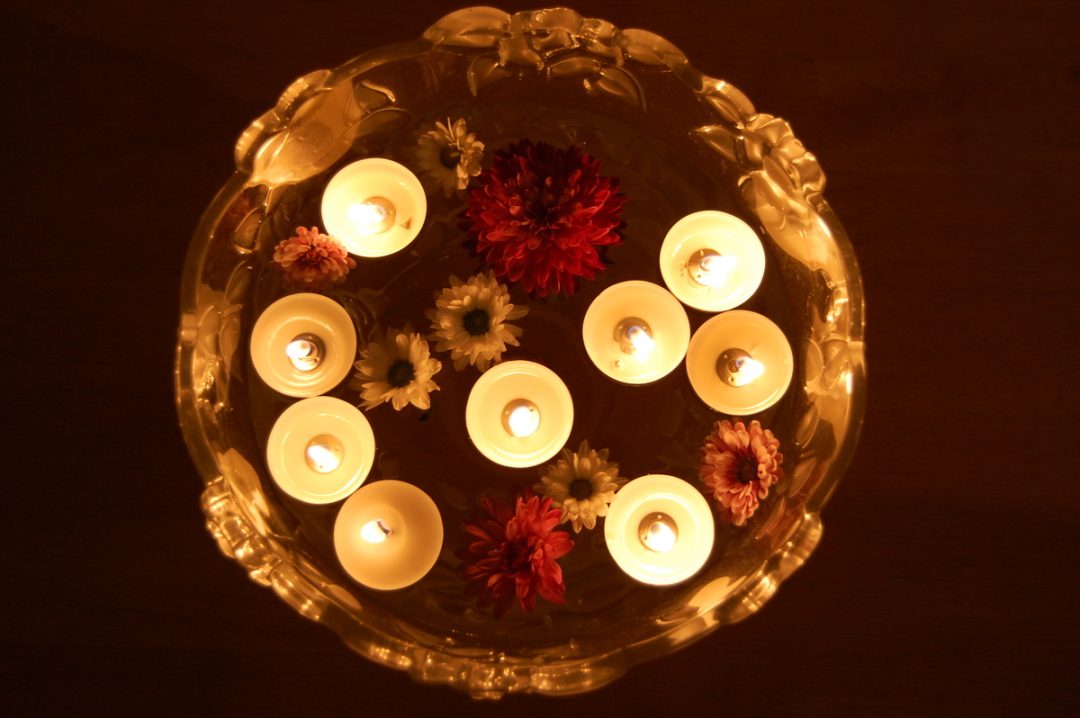How is Laxmi Puja done on Diwali?
Diwali is the most important and commonly celebrated festival of Hindus in India and around the world. Diwali, derived from the Sanskrit word Dipawali, literally means a row of lamps. It is a celebration of the blessings of all good things we are fortunate to have and the expression of hope that with effort and determination all the difficulties and obstacles of life will be overcome.
In its most elaborate and inclusive version, Diwali extends over a period of six specific consecutive days of Hindu lunar calendars. However, the fourth day of Diwali, which falls on the last no moon day of the Ashwin month in the Indian National (Hindu Lunisolar) calendar, is by far the most important and universally celebrated day of the festival across all regions and is referred to as Laxmi Pujan day.
Laxmi is by far the most popular and commonly worshiped goddess, and perhaps the second most popular deity among Hindus, next only to Ganesha. Therefore, she is often worshiped along with Ganesha.
Considering the importance of material wellbeing in peoples’ lives, it is not surprising that the worship of Laxmi, the goddess of wealth and prosperity, holds a unique place in Diwali celebrations. Laxmi Pujan, therefore, is by far the most important and most commonly celebrated day of Diwali across all regions. Interestingly, this is the only day celebrated not only in homes and temples but also in businesses to seek her blessings for the financial wellbeing of the business ventures in the years to come.
The Rituals of Laxmi Puja
The word Pujana (worship) means adoration, reverence, honor, expression of gratitude, complete submission, appeasement, and imploration for a blessing. Puja is one aspect of worship, and normally refers to the religious ritual ceremony constituting the worldly aspect of worship, often accompanied by presentation of material offerings, personal services, and spiritual devotion to the deities. The core idea is to surrender to the deities, present gifts or offerings, and pray for their blessings for success in important ventures. Puja is done on a variety of occasions and in various settings: in homes and temples, at major festivals, and at other places where new ventures are located.
The specific rituals involved in a Puja can vary from very simple needing no preparations and taking only a few seconds, to very intricate, involving long periods of preparations, and ceremonies extending over many days or even months. Whether simple or elaborate, a Puja must be performed in immaculately clean and holy settings. Therefore, on a Puja day, the place of worship is thoroughly cleaned. All members of the family get up early, finish their bath, and wear fresh clothing. The person performing the Puja wears special clothes reserved for the holy occasion and only then begins the rituals.
 In the Puja rituals the deity Laxmi is treated as a real person and a guest visiting the home at the host’s request after a long journey. The various components of a comprehensive Puja and their meanings are as following:
In the Puja rituals the deity Laxmi is treated as a real person and a guest visiting the home at the host’s request after a long journey. The various components of a comprehensive Puja and their meanings are as following:
Awahana (invocation): to invite the deity
Asana (seat): to offer the deity a seat
Swagata (welcome): to greet and inquire the deity’s wellbeing
Padya Puja (washing of the deity’s feet): as the expression of utmost respect
Arghya (offering of water): to freshen up
Achamana (offering of water): to drink
Madhuparka (offering of honey or a honey-water drink): as an energy booster
Snana or abhisekha (bath): the offering of water for bathing
Vastra (clothing): Offering of fresh clothing
Anulepana or Gandha (perfumes and ointments): For feeling fresh after bath
Puspa (flowers): the offering of loose flowers or a garland
Dhupa (incense): Offering of a burning incense
Deepa (lamp): lighting the lamp
Arati (lamp ritual): the process of holding the lamp in front of the deity
Naivedya or Prasada (any fruit, sweets, or special food items): First offered to the deity (Naivedya), and later, taken by the worshipers as blessings of the deity (Prasada)
Namaskara or Pranam (Folding of hands, bowing, or complete prostration): to symbolize complete submission, surrender, and homage
Visarjana or Udvasana (farewell): Departing wishes to the deity
In Hindu homes, a small family shrine is set up either in a separate room or on an altar located in a private room in the interior of the house. The shrine has Murtis (idols) or pictures of various deities, some popular and common in most homes, while others unique to each family’s tradition. Lord Ganesha and goddess Laxmi being the most popular deities among Hindus, their idols are invariably in most Hindu homes.
Laxmi Puja is performed either by the lady of the house or an elder person of the family in the evening of the Diwali day, with some simple offerings of light, water, incense, flowers, and fruit, and incantation of a few prayers. Often a specially designed and decorated copper, brass, or silver plate is used to keep the items needed for such Puja: a Deepa (oil lamp), Saffron paste, Haldi (turmeric), Kumkum (holy red color powder), camphor, metal cup for water, spoon, etc. Fresh flowers and fruit available on the day complete the list.
It is believed that Laxmi arrives only in the evening and enters only those homes that are immaculately clean, well-lit, and have their doors open as a sign of true welcome to her. Therefore, on this day, ladies light oil lamps in their homes, draw welcoming Rangolies (colored sand art) in front of the doors, and keep the front doors open. Many women use Rangoli to draw footsteps from the door to the altar showing the path for goddess Laxmi to follow.






